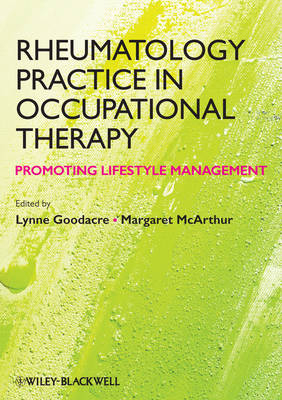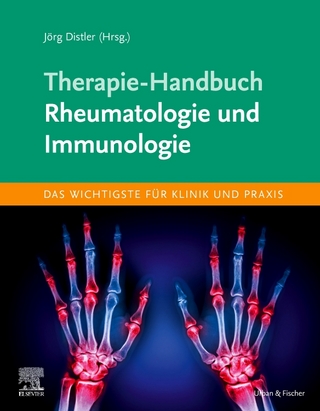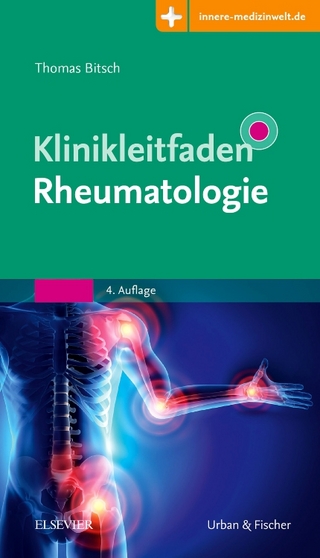
Rheumatology Practice in Occupational Therapy
Wiley-Blackwell (Verlag)
978-0-470-65516-0 (ISBN)
Rheumatology Practice in Occupational Therapy: Promoting Lifestyle Management is a valuable new
handbook focusing on rheumatology, a core area of occupational therapy practice. It provides practical guidance to help occupational therapists treat and manage rheumatic conditions in both clinical and community settings and emphasises a contemporary ‘client-centred’ approach as a fundamental requirement of effective and rewarding occupational therapy practice.
Drawing upon personal, clinical and theoretical perspectives, Rheumatology Practice in Occupational Therapy equips the reader with an understanding of the relevant practical skills and of the clinical reasoning required to modify and apply these skills to the needs of individual people. Written by experts from occupational therapy, sociology and psychology, this book addresses the need to adapt occupational therapy interventions to each client’s own experience of living with a rheumatic condition and develops the reader’s understanding of key theoretical and clinical approaches to person-centred management.
Rheumatology Practice in Occupational Therapy is essential reading for all occupational therapists helping people with rheumatic conditions in hospital and community settings, and for students preparing for practice. It will also be of interest to other healthcare professionals working with people with these conditions.
• Includes personal narratives of people trying to live their lives within the context of a debilitating condition
• Promotes understanding of key theoretical and clinical approaches to person-centred management
• Written by authors with extensive experience in clinical and research contexts
• Offers practical resource sections at the end of each chapter
Related titles
Occupational Therapy and Older People, 2nd Edition
Anita Atwal, Anne McIntyre
978-1-4443-3333-6
Role Emerging Occupational Therapy: Maximising Occupation Focused Practice
Miranda Thew, Mary Edwards, Sue Baptiste, Matthew Molineux
978-1-4051-9782-3
Interprofessional Rehabilitation: A Person-Centred Approach
Sarah G. Dean, Richard J. Siegert, William J. Taylor
978-0-470-65596-2
About the EDITORS Dr Lynne Goodacre is Research Fellow, Faculty of Health and Medicine, Lancaster University. Dr Margaret McArthur is Director of the MSc pre-registration OT programme in the School of Allied Health Professions, University of East Anglia.
Notes on contributors ix
Preface xi
1 Living with a rheumatic disease: the personal perspective 1
Lynne Goodacre and Margaret McArthur
1.1 Introduction 1
1.2 Living with a rheumatic condition 3
1.3 Developing new skills and learning 9
1.4 Summary 12
2 Living with rheumatic diseases: the theoretical perspective 13
Margaret McArthur and Lynne Goodacre
2.1 Introduction 13
2.2 Understanding and being understood 13
2.3 The impact of a rheumatic condition on a person’s sense of self 17
2.4 The experience of living with a rheumatic condition 23
2.5 Acknowledge the loss, promote the gain 25
3 Understanding rheumatic diseases: the occupational therapy perspective 29
Margaret McArthur
3.1 The centrality of occupation 29
3.2 Occupational potential 30
3.3 Occupational science 30
3.4 Understanding need 31
3.5 Occupational identity 33
3.6 Occupational adaptation 34
3.7 Occupational balance 34nts
3.8 Occupational gain 35
3.9 Clinical reasoning – the thinking that guides practice 36
3.10 Personal perspectives 39
4 Managing rheumatic conditions: the policy perspective 47
Lynne Goodacre
4.1 Introduction 47
4.2 Increase in the ageing population 47
4.3 Increase in long-term conditions 49
4.4 The delivery of efficient client-centred approaches to health and social care 56
4.5 Shaping policy to meet the needs of people with rheumatic conditions 58
4.6 Conclusions 59
5 Occupational therapy assessment and outcome measurement 63
Annette Sands and Lynne Goodacre
5.1 Introduction 63
5.2 Outcome measurement: the policy context 64
5.3 The occupational therapy assessment process 65
5.4 Commonly used data-collection tools 67
5.5 Factors influencing the choice of data-collection tool 72
5.6 Summary 77
6 Psychological approaches to understanding and managing rheumatic conditions 81
Deborah Harrison
6.1 Introduction 81
6.2 Health psychology and biopsychosocial perspectives 81
6.3 Coping with illness 83
6.4 Transactional model of stress 83
6.5 Self-efficacy and hardiness 85
6.6 Locus of control 86
6.7 Crisis theory 87
6.8 Coping styles 90
6.9 Moving beyond coping: hope 91
6.10 Conclusion 91
7 Approaches to promoting behaviour change 95
Sarah Drake
7.1 Introduction 95
7.2 Relevance to occupational therapists 96
7.3 Health behaviour change 96
7.4 Social Cognition theories 97
7.5 Implications for practice 98
7.6 Implications for practice 100
7.7 Motivational interviewing 101
7.8 Clinical example of the TTM 101
7.9 Limitations of the TTM 107
7.10 Conclusion 108
8 Joint protection 111
Alison Hammond
8.1 Introduction 111
8.2 What is joint protection? 111
8.3 The aims of joint protection 112
8.4 Why and when to use joint protection 112
8.5 Joint protection and energy conservation principles 114
8.6 Understanding and perceptions of joint protection 115
8.7 Goals of joint protection education 116
8.8 Evidence for joint protection effectiveness 117
8.9 The Looking After Your Joints Programme and the Lifestyle Management for Arthritis Programme 119
8.10 Teaching joint protection 119
8.11 Practical techniques 125
8.12 Conclusion 130
9 Pain management 133
Lucy Reeve and Margaret McArthur
9.1 Introduction 133
9.2 What is pain? 133
9.3 Pain and rheumatology 134
9.4 Living with rheumatic pain 135
9.5 Pain assessment 136
9.6 Pain and occupational therapy 138
9.7 Patient education 139
9.8 Fatigue management 139
9.9 Sleep hygiene 140
9.10 Medication 140
9.11 Changing behaviour 140
9.12 Vocational rehabilitation 142
9.13 Psychological interventions 143
9.14 Social support 146
9.15 Summary 147
10 Maintaining independence 153
Jill Jepson and Lynne Goodacre
10.1 Introduction 153
10.2 What is assistive technology? 154
10.3 Reducing non-use of assistive technology 154
10.4 Matching person and technology 156
10.5 Applying the MPT to AT for people with rheumatic conditions 157
10.6 Assistive technology outcomes 160
10.7 Methods of obtaining AT 161
10.8 Commonly used AT and home adaptations for people with rheumatic conditions 163
10.9 Inclusive design 163
10.10 Conclusion 166
11 Vocational rehabilitation 171
Lucy Reeve and Janet Harkess
11.1 Introduction 171
11.2 The importance of employment 172
11.3 The current context of vocational rehabilitation 172
11.4 Predictors of work disability and work instability 173
11.5 Vocational rehabilitation 174
11.6 Occupational therapy and vocational rehabilitation 175
11.7 Work evaluation and monitoring 177
11.8 Condition-specific interventions 178
11.9 Work-specific interventions 178
11.10 Advice on redeployment or retraining 180
11.11 Counselling and advocacy 180
11.12 Post-work support 181
11.13 Summary 182
12 Rheumatology splinting 189
Sarah Bradley and Jo Adams
12.1 Introduction 189
12.2 Splinting rationale 189
12.3 Clinical decision making 193
12.4 Approaches to evaluation 199
12.5 Splint construction 201
12.6 Summary 203
13 Maintaining a sense of self 207
Penny Sloane and Lynne Goodacre
13.1 Introduction 207
13.2 Impact of rheumatic conditions on body experience 209
13.3 An introduction to strategies to increase confidence in personal presentation and clothing style 212
13.4 The impact of rheumatic conditions on personal and sexual relationships 215
13.5 Conclusions 217
Index 221
| Verlagsort | Hoboken |
|---|---|
| Sprache | englisch |
| Maße | 175 x 244 mm |
| Gewicht | 376 g |
| Themenwelt | Medizinische Fachgebiete ► Innere Medizin ► Rheumatologie |
| Medizin / Pharmazie ► Physiotherapie / Ergotherapie ► Ergotherapie | |
| ISBN-10 | 0-470-65516-X / 047065516X |
| ISBN-13 | 978-0-470-65516-0 / 9780470655160 |
| Zustand | Neuware |
| Haben Sie eine Frage zum Produkt? |
aus dem Bereich


